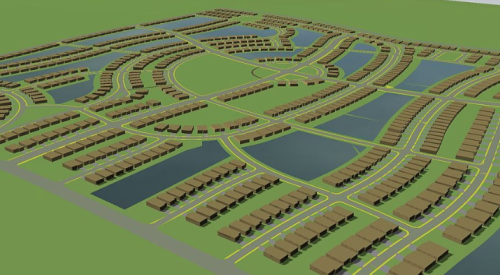|
Heather McCune, Editor in Chief
|
At Professional Builder, we work diligently to provide readers with information to build profit and not just houses. To those not involved on a day-to-day basis in the business of creating content, this may seem like a small distinction, but to us, it motivates and guides every article we investigate and every word we write.
This month's cover feature, How For-Profit Builders Can Make Money in Affordable Housing, at first tested this mission. It's easy to frame this article around the obvious - the growing housing gap in America, as incomes lag and home prices soar. Even though the overall homeownership rate has risen in the United States, the number of homeowners among low- and moderate-income families with children has declined since the late 1970s. Among working families - defined as those in which members work the equivalent of a full-time job and earn between the full-time minimum wage of $10,712 a year and 120% of the area's median income - homeownership rates lag far behind the rest of the population, at 56.6%.
The data points on the problem never end, but page after page of this misses our mark - demonstrating ways, and offering reasons, why for-profit builders should be leaders in the movement to create affordable housing. Start with the examples showcased here:
- Perry Bigelow, a suburban Chicago production home builder, knows how challenging it is to apply production efficiencies when building inner-city affordable housing. He also knows the opportunity that exists for builders who figure it out - like he has.
- Mark Kaufman, an architect turned builder, delivers affordable housing in Houston by focusing on three things: density, consistency and speed. There is no margin for error in this business, and by forever working to simplify the complex, Kaufman prospers in a niche with few competitors.
- Jeff Lee, president of the Los Angeles-based Lee Group, attributes 25% of his business to affordable housing. Melding affordable and market-rate housing opens up land opportunities for his company he couldn't touch otherwise.
- David Hill, chairman and CEO of Kimball Hill Homes does nothing small. Number 24 on the 2004 GIANTS list, Kimball Hill Urban Centers LLC promises to rev the organization's growth prospects. In a partnership with three other firms, Hill will create Park Blvd., a fast-tracked, mixed-income, mixed-use project in Chicago.
- Shelley Markle of Shelley Construction Services builds affordable housing under the New Homes for Chicago program. Buying city-owned lots for a dollar, Markle panelizes construction and simplifies designs to up margin.
All these practitioners combine a solid business reason for adding affordable housing to their repertoire with a personal belief that this it is the right thing do. Beyond that, the similarities stop. Companies range from small, single-owner operations to a Top 25 Giant and every size and specialty in between.
It isn't only for personal gain or personal belief that every builder owes these pioneers gratitude. Without their example - and those of others not named here - home building and home builders face a public relations problem that could morph into a regulatory one as well. The housing affordability crisis could become an issue in the November elections. In California, headlines tell of senators working to form housing coalitions to address affordability and, more ominously, of officials pondering zoning to reduce home prices.
Develop your formula to add affordable housing to your offering. The reasons to do so are all about what's right - for the bottom line and for the satisfaction of building dreams for those anxious to share in America's promise.












